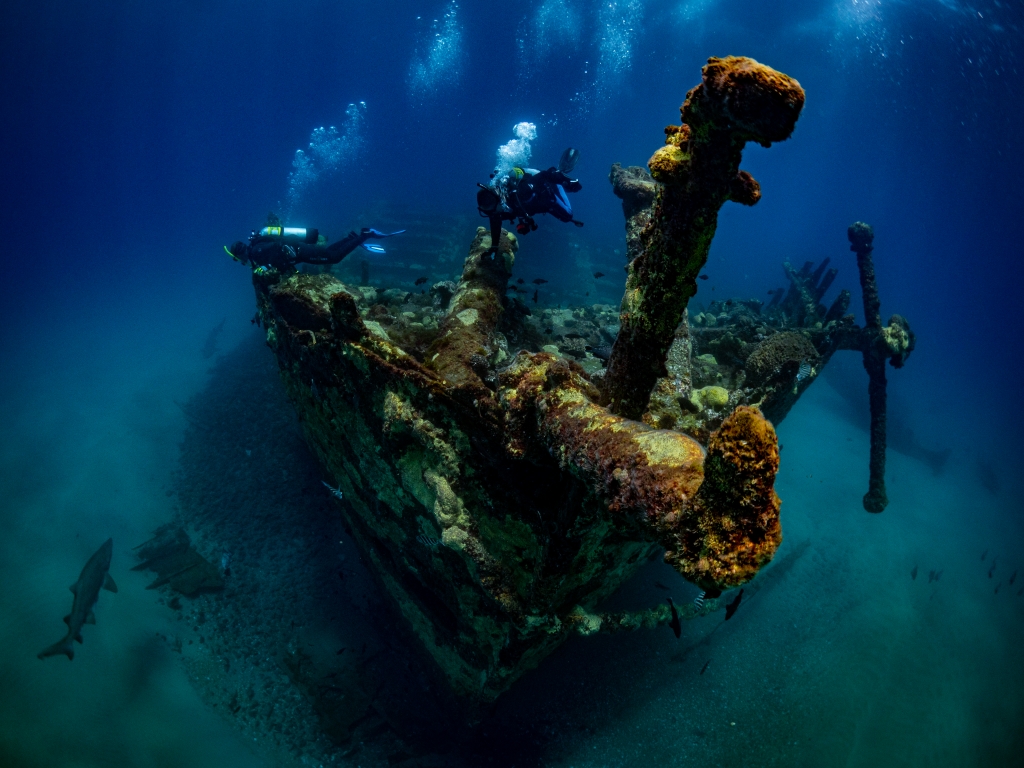
This article originally appeared in The Washington Post.
“This ain’t resort diving.” I’m on the phone with Dave Sommers asking about booking a scuba dive on a shipwreck off Cape Hatteras, N.C., and Sommers is stressing that wreck-diving in the open Atlantic Ocean is a step up from finning along near-shore coral reefs, and that neither he nor his crew will babysit clients underwater. Basically, I’d better know what I’m doing.
On the one hand I do. I have an advanced open-water scuba certification from the Professional Association of Diving Instructors and dozens of dives to my credit, including six in the past year. On the other hand, all of those were near shore, mostly on coral reefs and guided by dive masters — people whose job it was to look out for their clients’ safety. Still, I’m a strong swimmer, comfortable in the ocean and old enough not to ignore a seasoned expert like Sommers. After I share all of this with him, he agrees to take me on.
The fact is, I didn’t need Sommers to provide a sobering take on wreck-diving. The author Robert Kurson had already accomplished that through his gripping nonfiction book, “Shadow Divers,” about a mission to identify a mysterious wreck that lay in 230 feet of cold, dark water 60 miles off New Jersey.
Everything about that account — the wreck, the conditions, the divers, their persistence and preparation, and, despite all that, the number of things that went wrong — imprinted on me the stakes of open-ocean diving.
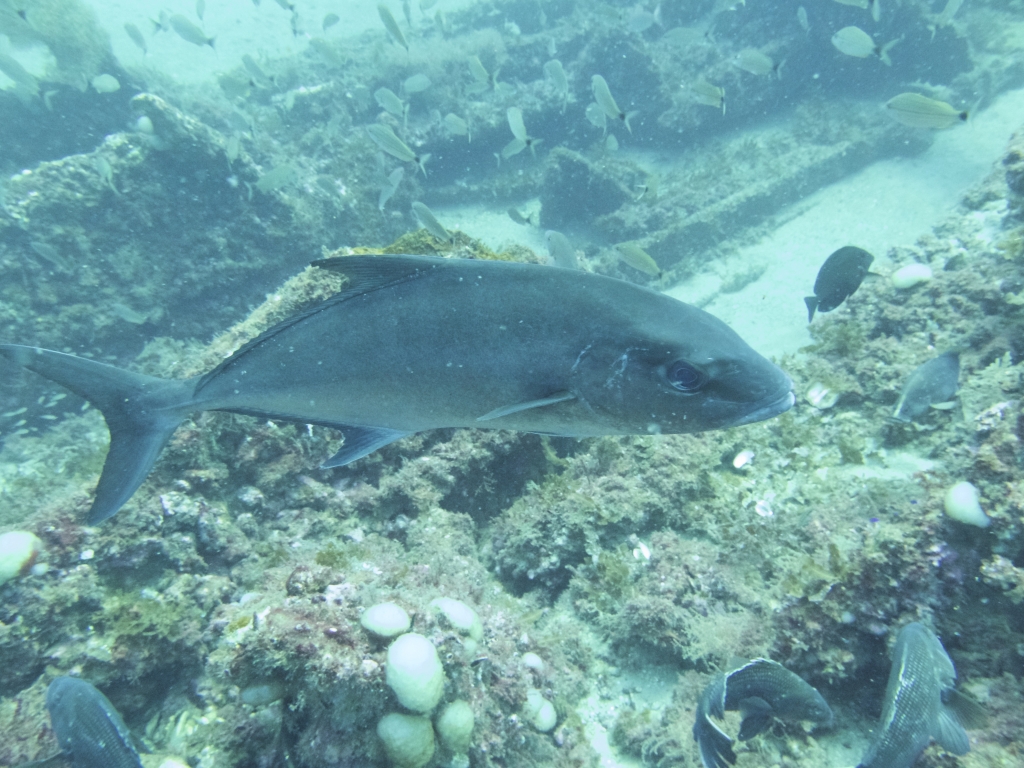
I’ve wanted to dive off Hatteras ever since I heard it was a thing. There are hundreds of wrecks in the area, dating from the Civil War era to post-World War II. Dozens are in diveable range because of a confluence of factors, chief among them that a major north-south shipping lane passes close to the cape. Before the advent of electronic navigation, many ships succumbed to storms, shifting shoals, the vexing collision of the northern Labrador and southern Gulf currents, or, during World Wars I and II, German submarines.
But I always had other priorities in the Outer Banks — wind, waves and beach time — and I resisted the advance commitment needed to secure a spot on a dive boat. That changed this summer when my family and I booked two consecutive weeks on Hatteras Island, a stanza that allowed me to dive with minimal FOMO on other activities. Even better, my sister Gina, also a recreational diver with no wreck experience, agreed to join me on the day tri
We meet Sommers at his 42-foot Duffy, the Lion’s Paw, at a sound-side dock in Hatteras Village, on a hot Friday morning in early July. Sommers, in his second career after 35 years as a Fairfax County cop, looks like a Magnum P.I.-Jimmy Buffett mash-up, his graying mustache offset by blue patterned swim trunks, unbuttoned fishing shirt, sun hat and aviator shades.
Four other divers are joining us — Joe Stradley from Windsor, Va.; David Metacarpa, from Charlton, N.Y.; and a father-son duo, Eugene and Jude Link, from Seaford, Va., who are relatives of Sommers’s first mate, Marc Corbett. All are experienced, although Metacarpa concedes he’s only done a couple of wreck dives.

Sommers and Corbett fit Gina and me with gear — we’d brought only masks, snorkels and fins, while the other divers arrived with full kits, including air tanks — before our captain runs through the safety briefing: Manage your own gear, bottom time and decompression stops, and descend and ascend hand-over-hand via the anchor line to avoid getting swept away by currents. If you do get separated, get to the surface safely, inflate your signaling device (neon tubes that are visible from a great distance away), and don’t panic. “I’ll find you,” Sommers says, “but don’t let it come to that: The record is four miles and you don’t want to break it.”
The rest of the briefing was about coronavirus precautions: Wear a mask in the cabin, be respectful of people’s space, handle only your own gear, use hand sanitizer often, and don’t look for the community rinse bucket (a staple on dive boats for quickly desalting masks, snorkels and camera housings) because Sommers removed it. He describes himself as a “covid believer,” and an extensive section on risk and responsible behavior on his website supports the claim. Our trip is his first with clients in 2020.
As he steers us through the shoals and buoys of Pamlico Sound toward Hatteras Inlet a pod of dolphins appears off our starboard side, ripping through the small swells with sinewy efficiency. To port, Hatteras Island narrows toward its southern tip, with lime-hued marsh grasses, patches of maritime forest and hyphens of sand alight in the morning sun.
After we pass between Hatteras and Ocracoke islands, Sommers leans on the throttle, and the Lion’s Paw rears its bow toward the horizon. Eighty minutes later, and two hours after leaving dock, we slow to an idle on a milky blue sea, a tropical hue created by our proximity to the Gulf Stream.
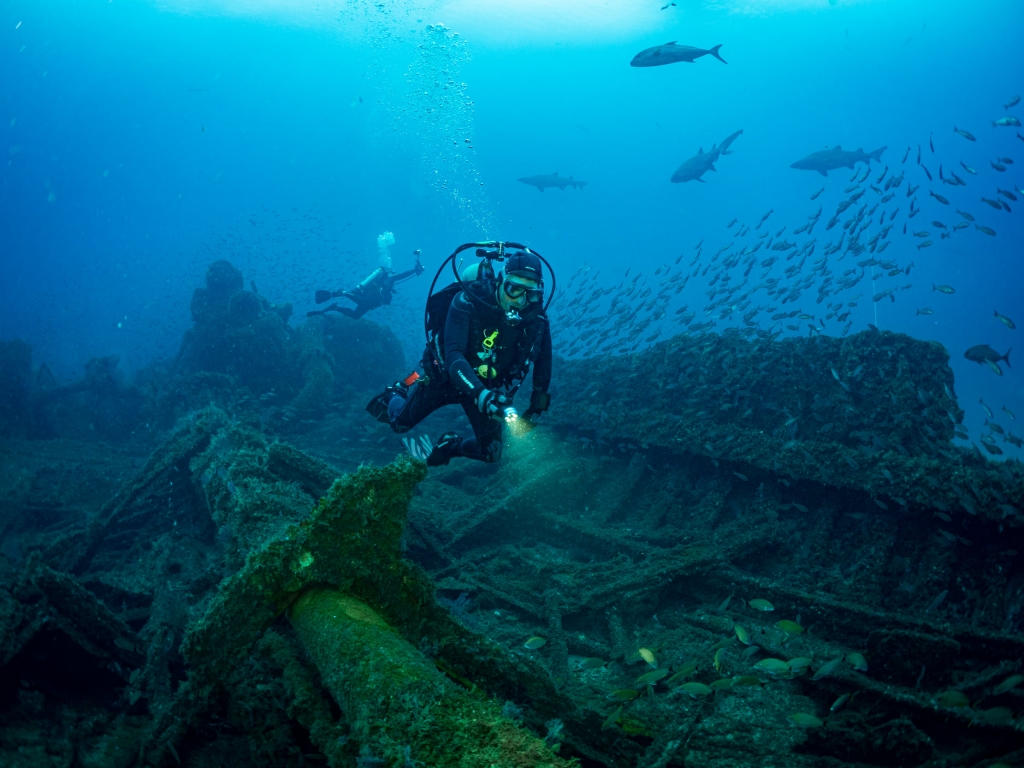
We’re eight miles off the beach of Ocracoke and 90 feet above the wreck of the Dixie Arrow, a 468-foot tanker that was torpedoed by a German U-boat on March 26, 1942, at the height of World War II. According to the informative website nc-wreckdiving.com, the tanker was approaching Cape Hatteras, en route from Texas City, Tex., to Paulsboro, N.J., with 96,000 barrels of crude oil.
“The U-71 had spent the night waiting near the Diamond Shoals Light Buoy hoping to intercept targets. With the breaking dawn, the U-boat captain, KK Walter Flascheenberg, was about the order his boat to the bottom when he spotted the masts of the approaching tanker on the horizon,” the site’s account of the incident reads. “The first torpedo hit at the midship deckhouse, destroying it and killing most of the deck officers. 60 seconds later the 2nd and 3rd torpedoes hit just aft of the deckhouse and cracked the tanker in two.”
Such details are a draw for wreck divers, offering a connection to the dive site and a slew of facts and trivia, mental snack food for a community already prone to nerding out on gear, dive travel and the life-or-death math of their sport.
For the moment, I’m connected to one goal: get suited up and in the water before I hurl. I rarely get seasick, but I also rarely stand on the deck of a motor boat for two straight hours, bucking over ocean swells while whiffs of diesel fumes taint the sea air. But, really, it’s mostly luck of the draw. The swell is a reasonable three to four feet, and none of the others seem the least bit bothered.
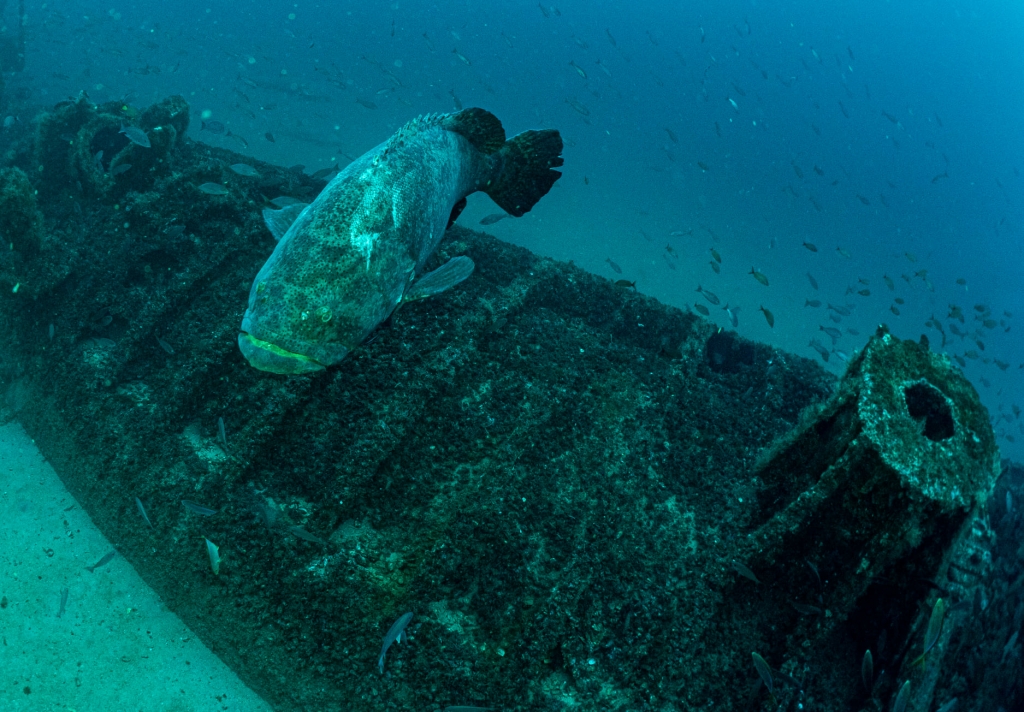
We are far out of sight of any land, but not alone: There’s a smaller dive boat already positioned over the Dixie’s bow, so Sommers parks over the stern and drops anchor. Corbett is getting ready to splash and set the granny line — a horizontal cable about 15 feet deep, so named for its ease of use, which we’ll use to pull ourselves over to the anchor line before descending to the wreck. He’ll also tie a line from our anchor line to the wreck as added insurance against the Lion’s Paw drifting away.
Just before taking that giant stride, I look around — at the sun glinting off the endless swells, the everythingness, nothingness and vast loneliness of the open ocean — and take a deep breath to settle my stomach and my nerves.
As soon as I reach the seafloor, my anxiety recedes into the familiarity and thrill of the sport. There’s a current sweeping away from the Dixie Arrow, but it’s manageable. The corroded, encrusted remains of the tanker loom from the sand, but my eyes are drawn first to the clouds of fish — snappers, amberjacks, African pompanos, cleaner wrasses, Atlantic spadefish and more — a density of free-swimming life to rival most coral reefs. The fish are here because of the wreck.
The visibility is excellent — not aquarium clarity but far better than I expected. The same currents that can carry off a diver can also stir up sand and sediment, but for the moment we’re in luck.

Still towering from the Dixie Arrow’s stern are three hulking boilers, and Gina and I linger there, taking in the silhouette of man’s audacious engineering against the haunting relief of the endless blue beyond. We work slowly along the port side of the ship, which, thanks to salt, currents, storms and time, more resembles a vaguely contiguous mound of rubble than a distinct section of a vessel.
While all ocean wrecks will eventually dissolve, some are still enough intact that divers can swim well into the interior and sometimes find decades- or centuries-old artifacts. And worldwide, there’s a modest community of divers who live for the fleeting moments of the hunt. Because of how the human body responds to pressure and processes compressed air at depth, safely advisable bottom time decreases the deeper you go. So, as in the case of the crew in “Shadow Divers,” someone hoping to explore a wreck at 230 feet might have only 10 minutes to do so before heading back up.AD
Bad things can happen on any dive, even within seemingly benign, near-shore sites. But, as Stradley will tell me later, when I catch up with him by phone to fill some gaps in my reporting, deep, open-ocean diving “is a different animal.” He’s returning from another Dixie Arrow dive, one in which a sudden spike in wind caused the Lion’s Paw anchor line to pull free from the wreck, fortunately while all the divers were close enough to recognize what was happening and return to the boat.
We’re in 90 feet of water and thus have 40 minutes of bottom time. Since I’m not here to solve a historical mystery, I take a look-at-all-the-pretty-fish approach. Gina and I kick over the cluttered, decaying deck to starboard as two massive Atlantic stingrays cruise beneath us and a four-foot barracuda hovers above. We then head along the wreck — into the current, which will set up an easy coast back to the anchor line later — but in the time we have left, we don’t even make it amidships, where the fateful torpedo bisected the hull 78 years ago
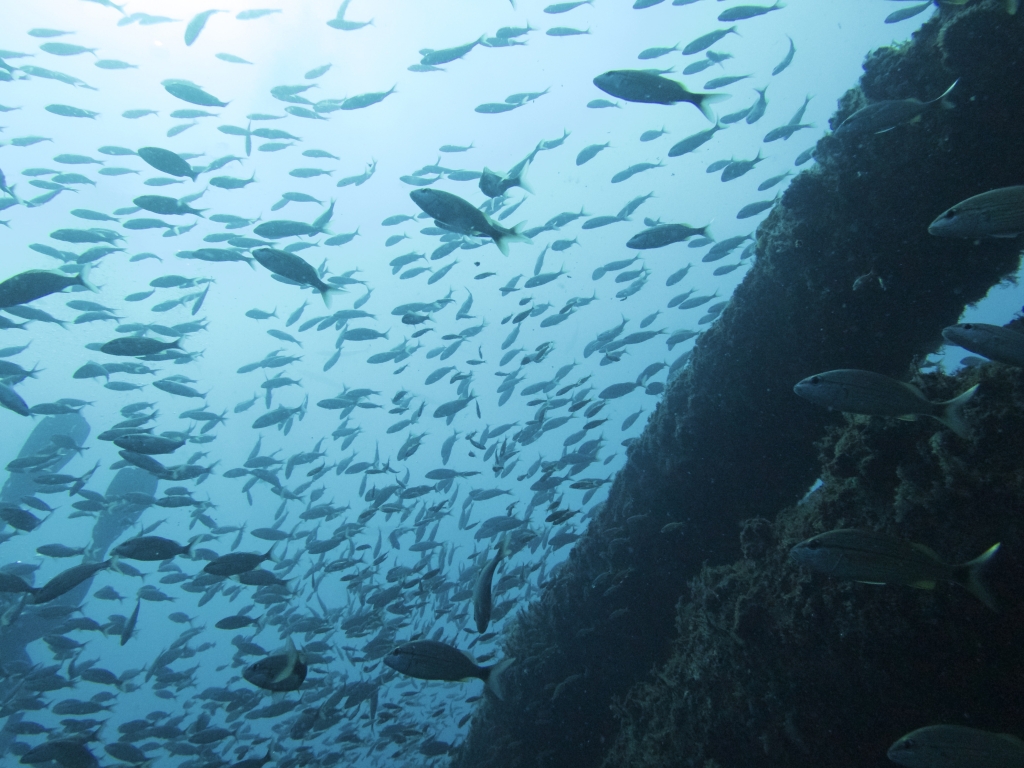
Back on board for our safety interval — time budgeted between dives to allow our bodies to outgas nitrogen — I lie down on a cushioned bench in the cabin, barely clinging to my equilibrium, as the others swap stories.AD
For our second and final dive of the day, Sommers had initially intended to take us to the Proteus, a 390-foot luxury liner that sunk in 1918 after colliding with another ship, but with the superb visibility on the Dixie Arrow, he decides to stay put.
Unfortunately, despite zero change in the surface conditions, when we get back to the Dixie the visibility has deteriorated. We can still see the ship’s remains and the abundant sea life but a gauzy layer of sand mutes the view.
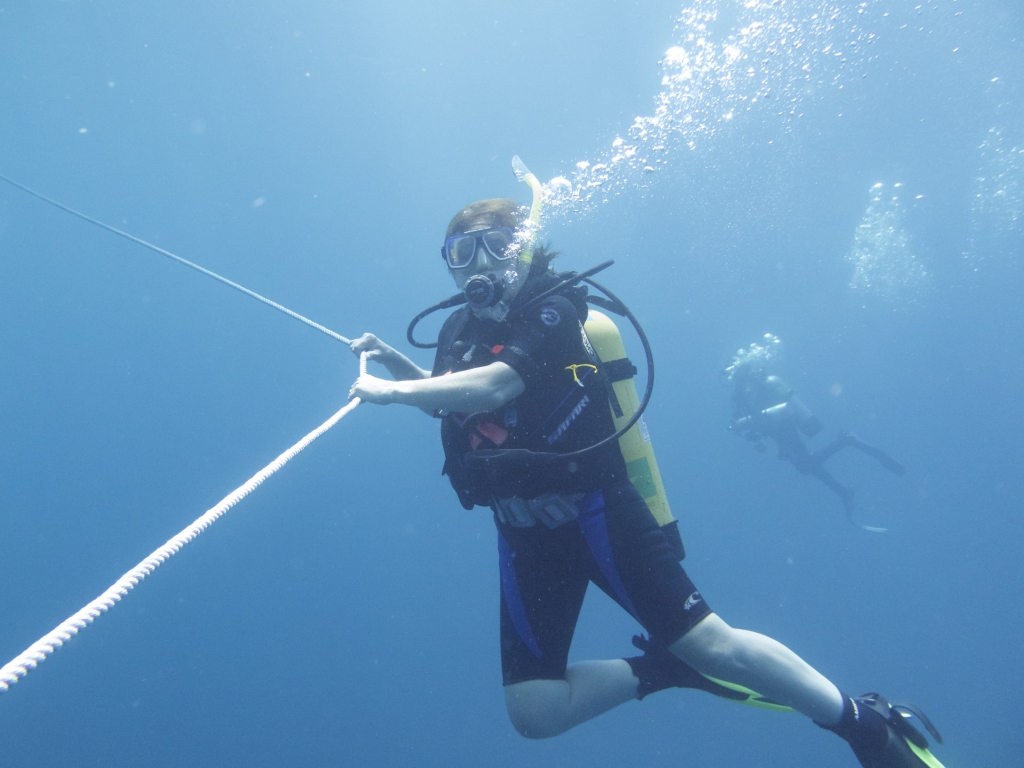
Such are the whims of Poseidon. Besides, the change gives the setting an appropriately eerie mien. I peer into the void, hoping for one of the large animals that are common here — a shark, manta ray or goliath grouper — to materialize, but none do. Stradley later says he once saw 27 sand tiger sharks together off the bow of this wreck. Our most unusual sighting is a toadfish, a cantankerous-looking creature almost completely camouflaged in a rusty pocket of the wreck.
In the end I find peak Zen drifting through clouds of fish, humbled by their numbers, their graceful movements and their dazzling beauty. When our time is up, we kick unhurriedly back to the anchor line and climb, hand over hand, toward the sun.

Comments